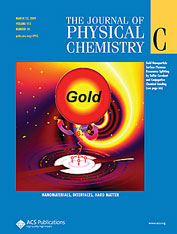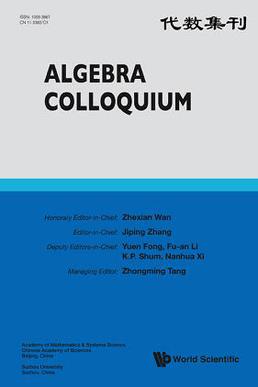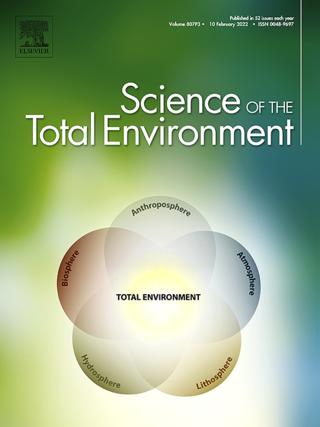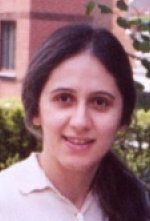
A nanoparticle or ultrafine particle is usually defined as a particle of matter that is between 1 and 100 nanometres (nm) in diameter. The term is sometimes used for larger particles, up to 500 nm, or fibers and tubes that are less than 100 nm in only two directions. At the lowest range, metal particles smaller than 1 nm are usually called atom clusters instead.
Springer Science+Business Media, commonly known as Springer, is a German multinational publishing company of books, e-books and peer-reviewed journals in science, humanities, technical and medical (STM) publishing.

Nanobiotechnology, bionanotechnology, and nanobiology are terms that refer to the intersection of nanotechnology and biology. Given that the subject is one that has only emerged very recently, bionanotechnology and nanobiotechnology serve as blanket terms for various related technologies.
The impact of nanotechnology extends from its medical, ethical, mental, legal and environmental applications, to fields such as engineering, biology, chemistry, computing, materials science, and communications.

Nanoscale iron particles are sub-micrometer particles of iron metal. They are highly reactive because of their large surface area. In the presence of oxygen and water, they rapidly oxidize to form free iron ions. They are widely used in medical and laboratory applications and have also been studied for remediation of industrial sites contaminated with chlorinated organic compounds.

Chad Alexander Mirkin is an American chemist. He is the George B. Rathmann professor of chemistry, professor of medicine, professor of materials science and engineering, professor of biomedical engineering, and professor of chemical and biological engineering, and director of the International Institute for Nanotechnology and Center for Nanofabrication and Molecular Self-Assembly at Northwestern University.

The Journal of Physical Chemistry C publishes scientific articles reporting research on several subdisciplines of physical chemistry:
Molecular Diversity is a quarterly peer-reviewed scientific journal published by Springer Science+Business Media covering research on molecular diversity and combinatorial chemistry in basic and applied research and drug discovery. The journal publishes both short and full-length papers, perspectives, news, and reviews. Coverage addresses the generation of molecular diversity, application of diversity for screening against alternative targets of all types, and the analysis of results and their applications. The journal was established in 1995 and the editors-in-chief are Hong-yu Li and Kunal Roy.
Molecular and Cellular Biochemistry is a peer-reviewed scientific journal covering research in cellular biology and biochemistry. It was a successor to the journal Enzymologia and was established in 1973 to make "it possible to extend the potentialities of the periodical".

Renata Reisfeld is an Israeli Professor of Chemistry and D.H.C. Enrique Berman Professor of Solar Energy at Institute of Chemistry of the Hebrew University of Jerusalem, Israel, author of 532 scientific papers cited more than 30,000 times.

Algebra Colloquium is a journal founded in 1994. It was initially published by Springer-Verlag Hong Kong Ltd. In 2005, from volume 12 onwards, publishing rights were taken over by World Scientific. The company now publishes the journal quarterly.

Nature Communications is a peer-reviewed, open access, scientific journal published by Nature Portfolio since 2010. It is a multidisciplinary journal and it covers the natural sciences, including physics, chemistry, earth sciences, medicine, and biology. The journal has editorial offices in London, Berlin, New York City, and Shanghai.

The Journal of Cluster Science is a quarterly peer-reviewed scientific journal covering all aspects of cluster science, including nanoclusters and nanoparticles. It is published by Springer Science+Business Media and the co-editors-in-chief are Tim Prior, Boon Teo, and Gareth Williams.

Ahmed A. Busnaina is an American nanotechnologist who is the William Lincoln Smith Chair and University Distinguished Professor, and Director of National Science Foundation’s Nanoscale Science and Engineering Center (NSEC) for High-rate Nanomanufacturing and the NSF Center for Nano and Microcontamination Control at Northeastern University in Boston, Massacusetts.
Photonic Sensors is an international journal and has been available online as an Open Access publication since 2011. It is co-published quarterly by the University of Electronic Science & Technology of China (UESTC) and Springer. Photonic Sensors publishes original, peer-reviewed articles that report on new developments of interest to members of the photonics and sensor communities in all fields of photonic-sensing science and technology, including but not limited to topics on:

Science of the Total Environment is a weekly international peer-reviewed scientific journal covering environmental science. It was established in 1972 and is published by Elsevier. The editors-in-chief are Damià Barceló, Jay Gan and Philip Hopke. According to the Journal Citation Reports, the journal has a 2021 impact factor of 10.753.

Rose Amal is an Australian chemical engineer, currently serving as Scientia Professor and ARC Laureate Fellow in the School of Chemical Engineering at the University of New South Wales, Australia, where she is the director of the Particles and Catalysis Research Group. Previously she was Director of the ARC Centre of Excellence for Functional Nanomaterials (2010–2013). From 2012 to 2015 she was named in the Engineers Australia list of Australia's Top 100 Most Influential Engineers. In 2014 she became the first female engineer elected a Fellow of the Australian Academy of Science.

Zinc oxide nanoparticles are nanoparticles of zinc oxide (ZnO) that have diameters less than 100 nanometers. They have a large surface area relative to their size and high catalytic activity. The exact physical and chemical properties of zinc oxide nanoparticles depend on the different ways they are synthesized. Some possible ways to produce ZnO nano-particles are laser ablation, hydrothermal methods, electrochemical depositions, sol–gel method, chemical vapor deposition, thermal decomposition, combustion methods, ultrasound, microwave-assisted combustion method, two-step mechanochemical–thermal synthesis, anodization, co-precipitation, electrophoretic deposition, and precipitation processes using solution concentration, pH, and washing medium. ZnO is a wide-bandgap semiconductor with an energy gap of 3.37 eV at room temperature.

Taraneh Javanbakht is an Iranian scientist and polymath.
Vitaliy Khutoryanskiy FRSC is a British and Kazakhstani scientist, Professor of Formulation Science and Royal Society Industry Fellow at the University of Reading. His research focuses on polymers, biomaterials, nanomaterials, drug delivery and pharmaceutical sciences. Khutoryanskiy has published over 200 original research articles, book chapters and reviews; his publications have attracted > 10000 citations and his current h-index is 48:. He received several prestigious awards in recognition for his research in polymers, colloids and drug delivery and also for contributions to research peer-review and mentoring of early career researchers. He holds several honorary professorship titles from different universities.














